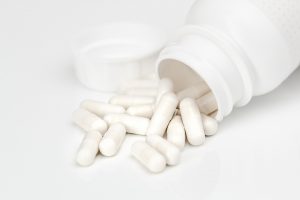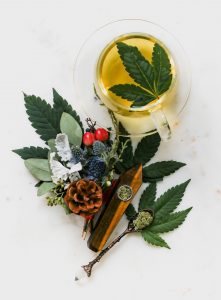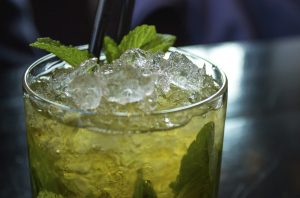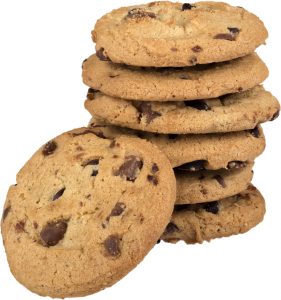
Today’s market size shows methanol revenues for 2018, 2020 and 2027.1 Data for 2027 is projected. According to the Methanol Institute, global demand for methanol increased at a compound annual growth rate of 5.9% from 2014 to 2019. Production takes place on 5 continents and in the Middle East. There are 90 plants with a combined production capacity of 110 million metric tons worldwide. Forty percent of the methanol consumed is used for emerging energy applications and about 33% is used in the production of formaldehyde. Formaldehyde is used in the production of resins, glues and various plastics. It’s also used to produce acetic acid which is used in the production of polyester fibers and PET plastics. The newest and growing use for methanol is in the production of light olefins ethylene and propylene. Ethylene is used in the production of packaging and nonpackaging film, PET plastics, PVC and polystyrene. Propylene is used as an alternative to propane and as a fuel gas in the chemical and plastics industries. Most methanol to light olefin production is done in China.
Emerging energy applications for methanol include automobile fuel, marine fuel, DME, biodiesel, fuel cells, electricity and boilers and cookstoves.2 China leads the world in using methanol as an automotive fuel. Currently, a majority of passenger cars in China are fueled by M15, a blend of 85% gasoline and 15% methanol. Since 2012 China has been participating in a pilot program to study the efficacy of using 100% methanol. In the last few years, 470,000 buses, trucks and taxis have been converted to run on either 100% methanol (M100) or a blend of 85% methanol and 15% gasoline (M85). In March 2019, China issued a policy paper encouraging the broad adoption of M100 as a vehicle fuel. Australia, Egypt, Iceland, and Israel also have programs testing the viability of using methanol as a transportation fuel. The United States researched using methanol as fuel in the 1980s and 1990s. Ford, GM, and Chrysler produced methanol-fueled versions of popular car models and sold them at the same price as gasoline-powered models. By 1997 there were 15,000 methanol-fueled vehicles on the road with 100 fueling stations in California alone. But, once the price of gasoline dropped below the price of methanol, the automakers stopped producing methanol-fueled vehicles. Despite this, with more than 200 million miles driven, methanol-fueled vehicles proved to be a viable alternative to gasoline-powered vehicles.
Why methanol? Renewable methanol, made from agricultural waste, forestry residues, municipal solid waste, and carbon dioxide from industrial exhaust, lowers carbon emissions by 65-95% when compared to fossil fuels. According to the Danish Department of Energy, carbon dioxide emissions from methanol on a well-to-wheel basis are the lowest of all alternative fuels, including battery-electric. Carbon dioxide emissions totaled 176g/km for gasoline engines, 178g/km for hydrogen, 142g/km for hybrid engines, 132g/km for diesel, 98g/km for battery-electric, and 83g/km for methanol. Renewable methanol fuel also has lower emissions of nitrogen oxides and volatile organic compounds and contains no benzene, toluene, ethylbenzene, and xylene. These last four cancer-causing chemicals in gasoline emissions do not biodegrade easily and can contaminate groundwater. And, while methanol emissions do contain toxic formaldehyde, if a heated catalytic converter is used, the levels meet or exceed California’s strict Ultra Low Emission Vehicle emission targets. With ground transportation accounting for close to 73% of all transportation greenhouse gas emissions in Europe alone in 2015, widespread adoption of methanol-fueled vehicles can have a dramatic effect on lowering carbon emissions and reducing the effects of climate change.
In 2019, three regions of the world accounted for approximately 75% of methanol consumption globally. More than half of global consumption was in China, followed by Eastern Europe and the United States. The industry is fragmented with the top 10 companies having less than 30% of global capacity. The leading producer of methanol is Methanex. Other top companies include SABIC, Celanese Corp., Eastman Chemical Co., BASF SE, and Atlantic Methanol among others. Methanex, SABIC, QAFAC, and GPIC produce low carbon methanol. BASF, BioMCN, Enerkem, New Fuel, and Nordic Green produce bio-methanol. Renewable methanol is produced by Carbon Recycling International and Innogy. More than 30 companies are involved in the research and development of low carbon methanol, bio-methanol, and renewable methanol.
1 Source for 2018 and 2027 data: “The Global Methanol Market to Garner $56,151 Million by 2027,” AB Newswire Press Release, March 17, 2020 available online here. Source for 2020 data: “Global Methanol Market 2020 : Industry Outlook, Top Countries Data, Comprehensive Insights, Growth and Forecast 2026,” MarketWatch Press Release, February 5, 2020 available online here.
2 DME stands for dimethyl ether. It’s used as a replacement for propane in liquid petroleum gas and can be used as a replacement for diesel fuel in transportation.
Geographic reference: World
Year: 2018, 2020 and 2027
Market size: $34.5 billion, $36.85 billion and $56.2 billion, respectively
Sources: “The Global Methanol Market to Garner $56,151 Million by 2027,” AB Newswire Press Release, March 17, 2020 available online here; “Global Methanol Market 2020 : Industry Outlook, Top Countries Data, Comprehensive Insights, Growth and Forecast 2026,” MarketWatch Press Release, February 5, 2020 available online here; “Energy,” Methanol Institute available online here; “The Methanol Industry,” Methanol Institute available online here; Tammy Klein, Methanol: A Future-Proof Fuel, Methanol Institute, February 2020 available online here; “The Chemical,” Methanol Institute available online here; “Methanol,” Chemical Economics Handbook, December 2019, IHS Markit press release available online here; Renewable Methanol Report, ATA Markets Intelligence S.L. on behalf of the Methanol Institute, December 2018 available online here; “Methanol Fuel in the Environment,” Methanol Fuels available online here; “Ethylene Uses and Market Data,” Independent Commodity Intelligence Services, December 9, 2010 available online here; “Methanol Market Size, Share, Demand, Trends, Industry Analysis, Statistics Worldwide 2026 | BASF SE, SABIC, Eastman,” MarketWatch Press Release, March 5, 2020 available online here; “Propylene,” Industrial Gases available online here.
Image source: Paul Brennan, “pumping-gas-fuel-pump-industry-gas-1631634,” Pixabay, August 31, 2016 available online here.



















